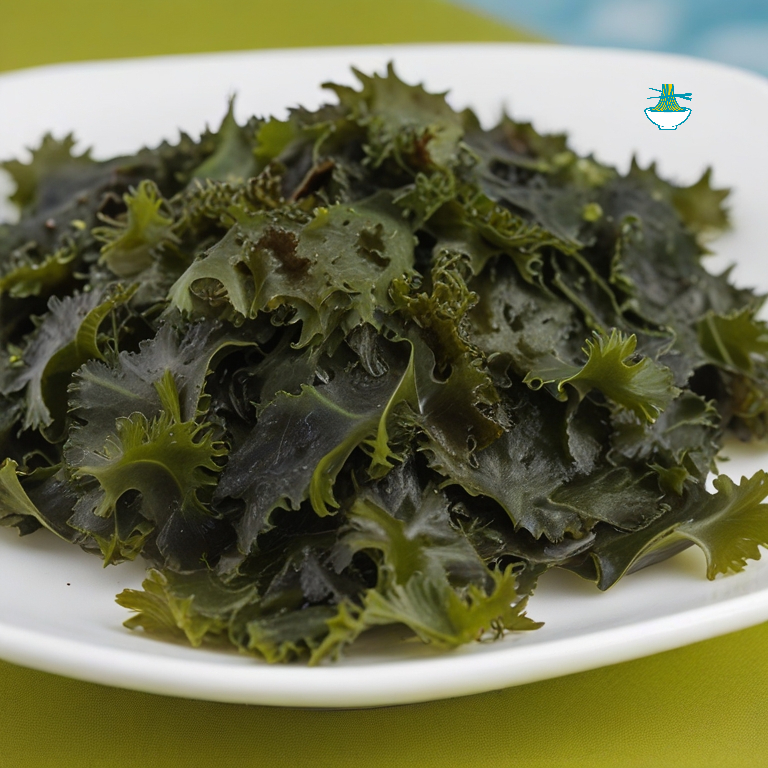Dive into the depths of Guernsey's coastal treasures with 'Guernsey Seaweed,' a captivating exploration of the island's rich marine ecosystems. Unveil the hidden world beneath the waves as you discover the diverse array of seaweed species that grace Guernsey's shores. From vibrant hues to intricate textures, each strand tells a unique story of resilience and adaptability. Join us on a journey of discovery as we unravel the ecological significance and cultural heritage of Guernsey's seaweed, showcasing its role in traditional practices, culinary delights, and sustainable innovation. Whether you're a seasoned marine enthusiast or a curious adventurer, 'Guernsey Seaweed' promises an immersive experience that will deepen your appreciation for the beauty and importance of our oceanic heritage.
Ingredients:
- 200g fresh Guernsey seaweed (such as dulse, kelp, or sea lettuce)
- 1 tablespoon sesame oil
- 2 tablespoons soy sauce
- 1 tablespoon rice vinegar
- 1 teaspoon honey or maple syrup
- 1 clove garlic, minced
- 1 teaspoon grated fresh ginger
- 1 tablespoon toasted sesame seeds
- Optional: sliced cucumber, shredded carrots, sliced radishes, or other salad vegetables of your choice

Instructions:
1- Rinse the fresh Guernsey seaweed thoroughly under cold water to remove any debris or sand. Pat dry with a clean kitchen towel or paper towels.
2- If using larger seaweed varieties like kelp, you may want to blanch them in boiling water for 30 seconds to soften them slightly. Then, drain and rinse them under cold water to stop the cooking process.
3- In a small bowl, whisk together the sesame oil, soy sauce, rice vinegar, honey or maple syrup, minced garlic, and grated ginger to make the dressing.
4- Place the seaweed in a large mixing bowl and pour the dressing over it. Toss gently to coat the seaweed evenly with the dressing.
5- If desired, add in sliced cucumber, shredded carrots, sliced radishes, or any other salad vegetables of your choice.
6- Sprinkle toasted sesame seeds over the salad and toss gently to combine.
7- Serve the Guernsey seaweed salad immediately as a refreshing appetizer or side dish. Enjoy the unique flavors and nutritional benefits of this oceanic delicacy!
Note: Adjust the dressing ingredients according to your taste preferences, adding more soy sauce for saltiness, honey for sweetness, or rice vinegar for acidity. You can also customize the salad by incorporating other ingredients like cooked shrimp, tofu, or avocado for added protein and texture.
Nutritional Values:
Here are the approximate nutritional values for the ingredients listed in the Guernsey Seaweed Salad recipe:
Fresh Guernsey Seaweed (200g):
- Calories: 40
- Protein: 2g
- Carbohydrates: 7g
- Dietary Fiber: 4g
- Fat: 1g
- Vitamins and Minerals: Guernsey seaweed is rich in various vitamins and minerals, including vitamin K, vitamin C, vitamin A, iodine, calcium, magnesium, and iron.
benefits:
- Rich source of vitamins and minerals, including vitamin K, vitamin C, vitamin A, iodine, calcium, magnesium, and iron.
- High in dietary fiber, which supports digestive health.
- Contains antioxidants that help combat oxidative stress and inflammation in the body.
Sesame Oil (1 tablespoon):
- Calories: 120
- Fat: 14g
- Sodium: 0mg
- Carbohydrates: 0g
- Protein: 0g
benefits:
- Contains healthy unsaturated fats, including omega-6 fatty acids, which support heart health.
- Provides antioxidants, such as sesamol and sesamin, which have anti-inflammatory properties.
- May help lower cholesterol levels and improve blood pressure.
Soy Sauce (2 tablespoons):
- Calories: 20
- Fat: 0g
- Sodium: 2000mg
- Carbohydrates: 2g
- Protein: 2g
benefits:
- Good source of plant-based protein.
- Contains essential amino acids necessary for muscle repair and growth.
- Provides flavor and umami richness to dishes with relatively low calories.
Rice Vinegar (1 tablespoon):
- Calories: 2
- Fat: 0g
- Sodium: 0mg
- Carbohydrates: 0g
- Protein: 0g
benefits:
- Low in calories and fat.
- Adds acidity and tanginess to dishes without adding excessive sodium or sugar.
- May help improve digestion and promote gut health.
Honey or Maple Syrup (1 teaspoon):
- Calories: 20-25 (depending on type and brand)
- Fat: 0g
- Sodium: 0mg
- Carbohydrates: 5-6g
- Protein: 0g
benefits:
- Natural sweeteners that add sweetness to dishes without refined sugars.
- Contains antioxidants and small amounts of vitamins and minerals.
- Provides quick energy due to its carbohydrate content.
Garlic (1 clove):
- Calories: 4
- Fat: 0g
- Sodium: 1mg
- Carbohydrates: 1g
- Protein: 0g
benefits:
- Rich in sulfur compounds, such as allicin, which have antimicrobial and immune-boosting properties.
- Contains antioxidants that may help reduce the risk of chronic diseases.
- Supports cardiovascular health by promoting healthy blood circulation and lowering cholesterol levels.
Ginger (1 teaspoon, grated):
- Calories: 1
- Fat: 0g
- Sodium: 0mg
- Carbohydrates: 0g
- Protein: 0g
benefits:
- Contains gingerol, a bioactive compound with potent anti-inflammatory and antioxidant effects.
- Supports digestive health by reducing nausea, improving stomach emptying, and alleviating indigestion.
- May help reduce muscle pain and soreness due to its anti-inflammatory properties.
Toasted Sesame Seeds (1 tablespoon):
- Calories: 52
- Fat: 4.5g
- Sodium: 2mg
- Carbohydrates: 2g
- Protein: 2g
benefits:
- Good source of healthy fats, including omega-6 fatty acids, which support heart health.
- Rich in minerals such as calcium, iron, magnesium, and zinc.
- Provides crunch and nutty flavor to dishes while adding texture and visual appeal.
Nutritional values may vary slightly based on factors such as brand, variety, and preparation method.


Comments